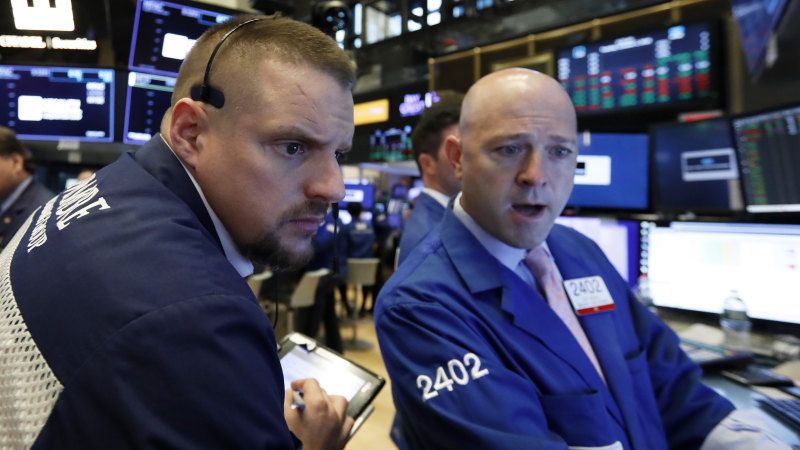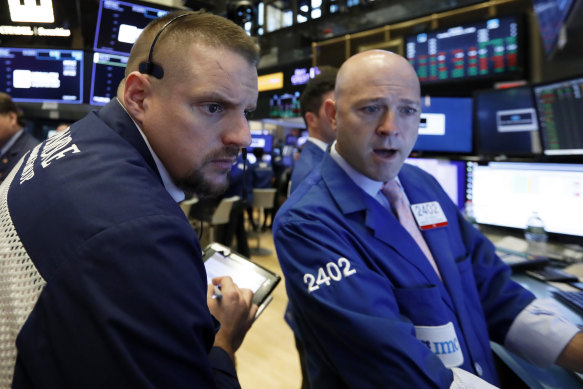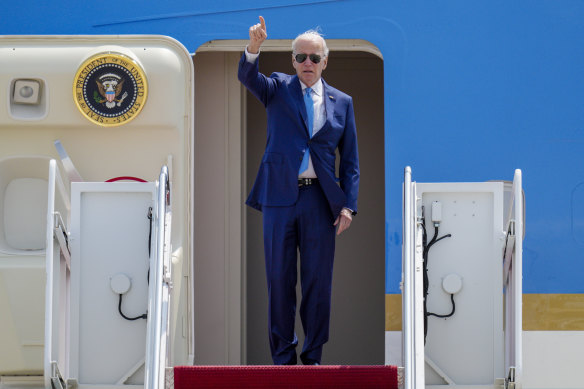Local investors confident US can avoid debt ceiling ‘Armageddon’
Save articles for later
Add articles to your saved list and come back to them any time.
Market jitters about the United States debt ceiling saga appear to be fading amid signs politicians are edging towards a deal, with investors saying inflation remains a bigger risk than the highly unlikely prospect of a US default.
As negotiations over the debt ceiling continue, Australian fund managers and experts predicted the US would avoid the potentially “catastrophic” scenario of a default, though they said high public debt remained a challenge for the world’s largest economy.
The US debt ceiling is a legal limit on how much the US government can borrow, currently set at $US31.4 trillion ($47.2 trillion). This limit was exceeded earlier this year and the US government has been using “extraordinary measures” to keep the wheels of government turning.
The US going into default would likely cause financial chaos across the globe.Credit: AP
But the deadline for when it hits the absolute ceiling – known as “X day” – is getting closer and US President Joe Biden last week scrapped plans to visit Australia to instead focus on resolving the debt crisis.
Analysts said there were some signs the drawn-out debt ceiling talks had affected the confidence of investors and US consumers, but they believed the nation would resolve the issue because it had too much to lose from a default, which would occur if it reaches X day.
Perpetual’s head of investment strategy Matt Sherwood said there had been progress in nutting out a deal, and he was confident they would reach an agreement.
“It’s something we always pay attention to and if the talks are going badly, you can see a widening in risk premiums. But in the end, we’ve seen this movie before, we know how it ends,” he said.
“It always ends with spending cuts or tax increases in exchange for extending the debt ceiling.”
Sherwood said continued high inflation, which could lead to more interest rate hikes from the US Federal Reserve, was a bigger risk for investors.
Senior portfolio manager at Ophir, Andrew Mitchell, stressed a US default was “highly, highly unlikely,” but said if it did happen this would have severe consequences for markets.
“It’s almost unthinkable to consider a US government default and what that would mean for its credit rating, financial markets and economic growth. It would be financial Armageddon,” Mitchell said last week.
“Republicans wouldn’t want to go down in the history books of causing default through its brinkmanship with the Biden government, destroying the US credit rating and its hard-won position as the world’s reserve currency,” he said.
ANZ Bank economists Brian Martin and Tom Kenny last week said since 1960, Congress had acted 78 times to either raise or revise the definition of the debt limit. They estimated the odds of the US defaulting were about 1 per cent, but said it would be “catastrophic” if it did occur.
AMP deputy chief economist Diana Mousina said she thought the probability of default was about 5 to 10 per cent, pointing to signs of progress in talks between the White House and the Republicans. “It looks like they don’t want to leave it to the very last minute,” she said on Friday.
Joe Biden said he was confident “America would not go into default” before jetting off to Japan for the G7 summit.Credit: AP
US Treasury bonds are viewed as the ultimate “risk-free” asset, setting a benchmark for how other financial assets such as shares and government and corporate bonds are priced around the world.
Mousina said markets would “freak out” if there was a default, causing yields on US government bonds to jump sharply.
“That would probably flow through to Australia, and the Australian dollar would fall because the Australian dollar is a procyclical currency. Sharemarkets would obviously tank,” Mousina says.
Economists have also said a US default would trigger a sharp rise in unemployment and drive the US economy into recession, as the government would cut payments for social security and government staff.
In a sign investors had been growing more nervous about the debt ceiling, a Bank of America survey of fund managers last week showed 71 per cent of respondents thought the ceiling would be raised in time, down from 80 per cent in April. But the survey still ranked the debt ceiling crisis fifth on fund managers’ list of worries, behind high inflation and high interest rates.
The Market Recap newsletter is a wrap of the day’s trading. Get it each weekday afternoon.
Most Viewed in Business
From our partners
Source: Read Full Article



